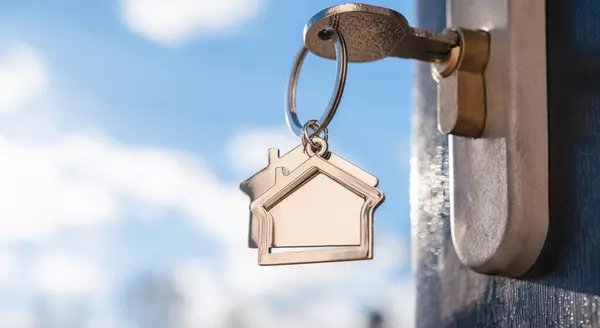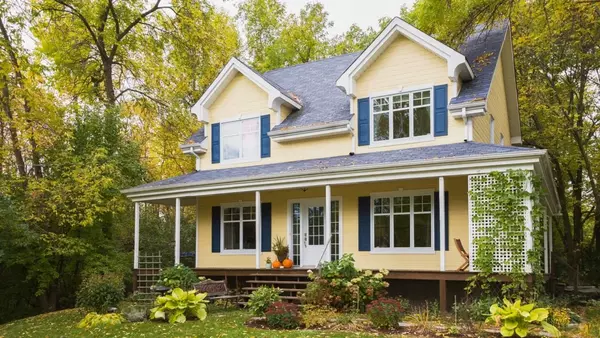How to Find an Apartment: 11 Ways to Beat the Hot Rental Market

Finding an apartment when everyone else seems to be looking for one, too, can test anyone’s optimism. Knowing how to find an apartment for rent quickly and with the least hassle can put you back in the positive zone so you can shift your energy from hunting for a home to moving into one. Below are 11 tips for how to get an edge on finding apartments, along with insights to help you gauge when your landlord or property manager might be open to negotiation. 1. Start your research ASAP — ideally at least four months before your move date This may seem obvious, but it’s nonetheless important: As early as you can, make your wish list and begin looking at rental listings that meet your priorities. The sooner you start your search, the more time you have to readjust your expectations and hone in on the best fit. For example, you might discover that an in-building fitness center isn’t as important as you thought if it means you can save a little extra cash each month, or that you actually really do love living a 10-minute bike ride from work. The more you’re crunched for time and fiercely competing with other hopeful renters, there’s a higher chance you settle and have renter’s remorse. 2. Focus your apartment search about two months before your move date Now that you have a sense of what’s realistic, it’s time to get serious. When looking at listings, pay special attention to apartments that become available in the first two weeks of the month because that is when you are likely to have the most to choose from. The end of the month is likely to be the most competitive. Keep your wish list and priorities top of mind. If budget is your primary concern, focus on neighborhoods that have the largest share of units in your price range. (We show you how to do that below.) 3. Be clear-sighted about your maximum rent In times where both competition and rents are high (by May 2024, the typical U.S. monthly rent was $2,125), it can be tempting to stretch your budget in order to land your dream apartment. Being clear sighted about your maximum spend ahead of time can help ensure you’re not overexerting your wallet. Try our Rent Affordability Calculator to determine what monthly payment would comfortably fit in your budget. Experts say a home is generally considered affordable if it takes up no more than 30% of your monthly income. Don’t waste time and application money on apartments that will leave you with little cash for fun, savings and other expenses. Tip: Zillow’s Local Legal Protections tool gives you information about local laws that protect renters from housing discrimination based on the source of income used to pay the rent, such as housing vouchers. 4. Set reasonable expectations for the locations you’re searching in You don’t need to be an expert in economics to understand what typical rent should look like in your area or when conditions lend themselves to getting a better deal by negotiating. Use Zillow’s Rental Market Trends tool to see the number of available rentals and their price range in any given zip code or metro area. Search for rentals based on the number of bedrooms they have, and compare rents and availability in two different areas. The tool also will tell you the median rent in the area you’re searching. 5. Save time with a single application Application fees can add up and prevent you from casting a wide net. Zillow gives renters the option of applying online to an unlimited number of participating rental properties for 30 days for a single $29 fee. The option doesn’t include every rental listed, only those properties that participate in the program. The application includes credit and background reports. Tip: If your gut feeling is telling you that you’ve found “the one,” consider filling out an application online if the option exists before you tour in person. This shows the property manager you’re already a serious applicant when you visit the property. 6. Use filters and alerts The Zillow app can alert you to new listings that match your home preferences in your preferred area. Use search filters to narrow your choices by price, home type, bed and bath preferences, pet requirements, laundry access and other amenities — and then save that search. Don’t forget to use floor plans and 3D tours to help refine your search and focus your in-person visits to apartments that have the most appeal for you. That way, you’re not waiting in line to tour a home with poor natural light, while the perfect townhouse around the corner is getting snapped up by someone else. 7. Let friends, co-workers and family know you’re looking for a place The rental market is in a constant state of churn. The people in your networks may know of units opening in their buildings or know someone who is moving out. You could nab a place before it even hits the market. Get one step ahead of the competition over a listing, and consider posting in Facebook or Nextdoor groups for the neighborhoods you’re interested in to ask about any rentals coming on the market. 8. Consider negotiating lease terms and conditions In a hot market, negotiating the terms and conditions of a lease might seem like a waste of time. It’s not. Property owners manage complex businesses. Finding stable, reliable tenants takes time and effort. If you fit the bill, you might consider the following: Offer to sign a longer lease. If you plan to stay for two or three years, offer to sign a longer-term lease. You could stand out as an applicant while also locking in your rent for several years. Offer flexibility. If you have the flexibility to move in quickly or on a timeline that is convenient for the landlord, mentioning that could also lead to a potential discount or give you a leg up in the screening process. Ask about rent concessions. If lower rent is not an option, a landlord may be open to discussing other perks and amenities that can save you money. For instance, consider asking for lower pet or gym fees or free parking. 9. Search just outside your preferred area If your market is super competitive, consider searching on the periphery of your preferred neighborhood to see if you can find a better deal while still being in proximity to your desired location. 10. Walk the neighborhood(s) where you want to live Owners of small buildings sometimes hang “for rent” signs or post notices in local coffee shops to attract people already living in the neighborhood. 11. Stand out from the pack by being prepared Landlords often use credit scores when qualifying potential tenants so make sure yours is in good shape. A few months before you move, consider checking your credit score with all three credit agencies, correct any errors and consider not racking up large amounts of credit debt or making a large purchase before you find a place. Line up references and collect paperwork that shows you have the income to pay the rent they’re asking. Pro tip: Use Zillow’s Renter Profile to introduce yourself to landlords and let them know what you’re looking for. Create a personal profile outlining your renter qualifications, such as a personal bio, employment, self-reported income and credit score, as well as your desired move-in date and lease duration. A profile allows you to stand out even with properties not accepting applications.
Read More5 Things to Look for in a Rental Listing

Whether you’re looking for an apartment, single-family house or townhome, be prepared to spend a lot of time online and even more time driving around to tour the most promising places in person. If you want to save time and avoid headaches, make sure that every rental listing you consider has all the information you need to make an informed decision. High-quality listings help you weed out the places that don’t fit your criteria (wait, Fido’s not welcome?), but they also indicate an organized, communicative and professional landlord — something every renter wants. As you begin your search, consider these five important things every good rental listing should contain: 1. Detailed details Front and center should be the number of bedrooms and bathrooms, square footage, storage space and a floor plan to help you visualize the layout. Bonus points if there is a 3D tour. Did you know you can filter rental listings on the Zillow app to only show ones that include a 3D tour? Avoid listings with vague terms like “junior one bedroom” or “open one bedroom.” According to Zillow research, 69% of renters require their preferred number of bedrooms. Landlords know this, so they get creative with descriptions to attract more tenants. If you’re moving to a new part of town or an entirely new city, look for listings with important facts about the neighborhood, including proximity to transit or major freeways, convenient shopping centers, and nearby recreation and entertainment options. Don’t rely solely on the listing description itself — test out things like walkability and commute using the Travel Times, Walk Score® feature in the Zillow app. 2. Your must-have amenities It may seem obvious, but nice-to-have in-unit amenities, like recent renovations, hardwood floors, plenty of windows and upgraded kitchens can sometimes overshadow the fact that the necessities aren’t there. Beyond basics like heating and kitchen appliances, every renter has different amenities that they consider must-haves. Does the listing you’re browsing have yours? The most popular amenities renters look for include air conditioning, in-unit laundry, ample storage and private outdoor space. Shared amenities should be included in the listing too — things like parking, rooftop decks, fitness areas, outdoor space, swimming pools and bike storage. 3. Major (and potentially problematic) policies The listing should disclose any policies that could be a deal breaker for you. Examples include rules around pets (including specific breeds), the maximum number of people who can live in the unit, smoking, parking, noise and — most importantly — lease terms and length. Additionally, see if you can tell if the landlord lives on-site or if a local property management company manages things. If the landlord is nearby, they’ll likely handle repair requests quickly, along with general building upkeep and maintenance. 4. Clearly described costs Make sure the landlord is exceptionally clear about the dollars and cents: What is the monthly rent? How much of a deposit is required, and is any of it refundable? Are there any one-time fees? Is there a pet fee or monthly charge? Does parking cost extra? Who pays for utilities? These additional charges can quickly move a listing from feasible to fruitless, so make sure you have all the info you need to do the math ahead of time. 5. High-quality photos Focus on listings that have not only good photos but also recent photos — and lots of them. Look for listings that include both interior and exterior shots, plus photos of all shared amenities. But renter beware: If the landlord says the photos are of a similar unit — not the one that’s actually for rent — you may find yourself looking at a phantom property or in a bait-and-switch situation. Once you find a few listings that include these details, you’re off to a great start. You can more easily compare properties side by side, identify deal breakers and find areas where a landlord might be open to compromising.
Read More6 Tips for Finding a Pet-Friendly Rental

Many of us think of our pets as family, and just like not every home is a good fit for our family, not every home is a good fit for our pets. Is there enough space? Can you afford the pet rent? What about a yard? Even in the dog-friendliest of cities, where the majority of listings are pet-friendly, these are factors that can distinguish the ideal rental from all the others. And depending on where you live, how many pets you have, and what breeds they are, finding the right fit isn’t always a walk in the park. Landing the perfect home for both you and your pet is possible with the right preparation and paperwork. Try these suggestions for finding a pet-friendly rental to help streamline your search and application process. 1. Start your search as soon as possible The hard truth is that if you have pets — particularly a large dog — it may take longer to find a suitable rental. Some landlords have a strict no-pet policy. In this case, their preference is to eliminate the risk that a dog or cat damages property or creates excess noise for the neighbors. So with potentially fewer options to choose from, give yourself extra time to search if you’re on a deadline. Begin by narrowing your search to pet-friendly rentals. On Zillow, this is designated by size and type of pet allowed (see more tips on searching for rentals on Zillow). Keep in mind that if a listing doesn’t say anything about pets — whether they’re allowed or whether they aren’t — you may not want to discount the rental. Consider reaching out to the landlord or property manager in this case to clarify their pet policy once you’ve browsed all your pet-friendly options. Also, consider looking at single-family properties. Landlords of individually-owned properties may be more likely to be flexible and accept pets on a case-by-case basis. Using keywords like “pet friendly” or “dog friendly” in your search can help narrow down rental listings as well. 2. Set a budget You’ll want to factor into your search the various pet-related costs that you may incur on top of your rent. Many landlords charge either a one-time pet deposit or a one-time pet fee; they are different things. The former is refundable. You should get your pet deposit back if your landlord decides the pet didn’t cause significant damage to the home. A pet fee, however, is non-refundable. Pet fees are typically requested by the landlord in order to cover any potential cleaning or repairs needed after you move out. Pet deposits and fees vary, but typically range from $50 going up to several hundred dollars. You might also encounter pet rent at some properties. This is either an annual or monthly fee that’s added to your rent. Some rentals require you pay both pet rent and a pet deposit or fee. Some states or cities have laws that limit how high these amounts can be, so check if this applies where you’re looking to live. If you have a dog, especially a large dog, you may be required to pay an additional pet deposit, pay extra for insurance that covers your dog’s breed or even rent on a month-to-month basis until your pooch earns your landlord's approval. 3. Ask for a conversation If you have your eye on a particular rental house or apartment complex and you’re unsure of their pet policy or think there may be flexibility, ask upfront if they allow pets. If you get a “no” and you’re pretty set on calling this place home, ask if you can discuss things. You might have success convincing the owner of single family rental homes or smaller complexes to change their minds, especially if they have pets of their own. Always lean on talking with the landlord to arrive at a solution — and never hide the fact that you’ll be living with a pet in the rental. 4. Write a pet resume It might sound surprising, but submitting a resume for your pet could sway your landlord — some places even require them. This document can attest to your pet’s good behavior. Have they completed any training courses? How are they with kids? Additionally, to prove that you’re a responsible pet owner, have your pet’s current vaccinations and license available to share with the landlord. And a cute photo might just win over a doubtful property owner. If the circumstances allow, consider offering to bring your pet to meet the property owner. This could give you an opportunity to show how well-trained your pet is and put your potential future landlord’s mind at ease. 5. Contact your local pet organizations for pet-friendly rental directories Local pet organizations often have a list of pet-friendly apartments in your area. The Humane Society has a list of tips for finding rental housing with pets, information about pet-owner rights and tips for keeping both your pet and landlord happy, once you land your rental. You could also lean on your neighbors and fellow dog owners. Check Facebook groups, or sites like NextDoor and Reddit to see what leads people might have. If you have a particularly large dog, or one that’s classified as an aggressive breed, you may have an even harder time finding a rental that’s right for the whole family. Your local animal shelter, breed rescue or advocacy group likely has a list of apartment communities that will accept your specific breed. For example, the website My Pit Bull is Family has a list of pit bull-friendly rental housing providers in each state. 6. Review your lease before signing If you wind up finding a listing that seems like a good fit, that’s a huge task off your plate. The property manager says they’ll accept your dog or cat, and the rent and fees are within your budget. But don’t let your excitement rush you into a lease. Read your lease agreement over and see if there are size restrictions that would increase your pet fee — or disqualify you from living there altogether. It should also spell out if said fee or rent is per pet, and be sure you understand what rules you and your pet have to follow. If you have a question or were told something that isn’t mentioned in the lease, ask your landlord to clarify. Be sure to document any fees and other pet-related factors in writing if they’re not already included. This can cover you in case anything unexpected happens that you’d previously discussed with your landlord.
Read MoreMoving? Consider These 6 Factors When Preparing Your Budget

Perhaps you’re looking for a fresh start, a place where you can search for a new way of living. Or maybe you’re a remote worker who’s decided to uproot to increase the odds of finding a home or rental that matches your budget. Or maybe you’ve found it's important to be closer to the people and places that make you happy. Whatever your reasons for moving, it's a good idea to prepare yourself financially as far in advance as you can to make your move less stressful. If your stress is related to the bigger financial picture involved in moving, this post is for you. Read on to learn what factors you should consider when planning your move, from beginning to end. 1. Check your credit scores Credit scores are super important — they can influence how much your housing will cost — or even whether you’ll be able to rent or buy the home you want. Concerns about credit scores and the disproportionate impact they have on consumers with limited credit histories have led to local rentals laws that limit their use. That said, landlords and lenders both use them. If you’re buying a home, credit scores will help determine whether you qualify for a mortgage and what interest rate you’ll pay on it. It could take a few months to boost your scores, and it’s worth taking the time to do that, especially if you’ve fallen behind on your bills or haven’t had time to build a credit history. If you’re unfamiliar with credit scores, the Consumer Financial Protection Bureau is a good place to start for basic information, links to getting free copies of your credit reports, and troubleshooting issues. Credit scores can have wrong or outdated information that works against you, so make sure they reflect reality. 2. Compare the cost of putting a roof over your head here and there A Zillow® analysis of United Van Lines move data shows that movers tend to move to metro areas that are less expensive and have less competition from other home buyers. This trend has intensified in the past couple of years as housing affordability declined. Unless you're getting paid to move, spend some time online looking at properties where you live and where you’re thinking of moving. Consider the following: If you're renting... Zillow has a tool that allows you to quickly assess how many rental properties in the city you're moving to fall into your affordable range. Just enter your monthly take-home income, debts and a location, and see the number of affordable apartments currently available. (The tool considers a home to be affordable if rent consumes no more than 40% of your income before taxes.) For instance, a single person taking home $3,000 a month and paying $500 a month toward debts could have more than a thousand affordable rentals to choose from in St. Louis, but only about a dozen in Boston. Explore Zillow’s Rent Affordability Calculator If you're buying... You can compare the cost of a typical home in cities around the country by using Zillow’s home value index. If you have a certain neighborhood in mind, you also can search by zip code. To drill down on homes in your price range, use the general home search. Keep in mind that in addition to your mortgage, you will have to pay property insurance and property taxes. (Most mortgage lenders will add those costs to your monthly payment.) If you’re putting down less than 20% toward the purchase, your lender will likely require you to pay for private mortgage insurance until your equity in the home reaches 20%. For sizable loans, that insurance can add hundreds of dollars to your monthly cost. 3. Account for extra expenses in your first few weeks or months There’s likely to be a period of transition from the old to the new. Unless you’re lucky enough to have friends or family to stay with or an employer that’s providing a housing allowance while you look for a new home, you’re going to need a place to stay while looking or waiting to close. Extra costs to consider for renters Upfront costs of moving into a new apartment. This may include application fees, security deposits and background checks. Pet fees. If you have a pet, you may be required to pay a higher security deposit and/or an extra monthly fee. Utilities not included in the rent. Alsofactor in any deposits you might have to pay before a utility company provides service. Utility costs can vary widely between cities, and bills also will vary based on the size of your home and weather patterns that affect consumption. If you’re likely to be running air conditioning or heating 24/7, things can get expensive quickly. Appliances. Not all rentals come with a refrigerator, so make sure your new home will be equipped with one. Buying even a basic fridge new can run you hundreds of dollars. Extra costs to consider for buyers A basic set of tools for home maintenance. If you don’t want to spend on tools you won’t use frequently, you can always borrow a lawnmower or hedge trimmer from a neighbor or friend, or save money by renting one cheaply if you’re lucky enough to live in a place with a tool library. See our list of tools every homeowner needs. Utility costs. This could include electric/gas, water and trash. Factor in setup costs for cable or internet if the home isn’t already wired. Appliances and furnishing. Consider which appliances will need replaced in older homes that haven’t been updated. Factor in major furnishings, and whether you'll buy new, or pay to move and store what you have. HOA fees. Condos and homes in planned communities usually have homeowner associations (HOAs) that charge monthly or annual dues for the maintenance and repair of common areas. 4. Compare taxes and fees Each state, county and municipality has its own way of keeping the lights on, the roads maintained and the services running. Some states rely on income taxes while others rely primarily on sales tax and other fees to provide essential services. How those taxes pencil out for you in a move between states will depend on how taxes are levied. Compare what you’re currently paying with what you can expect to pay in your new home with this state-by-state overview provided by The Tax Foundation, a not-for-profit think tank. Detailed information on what you can expect to pay in any given state is available through the individual state’s revenue department. If you own a business or need even more detailed information on sales taxes, corporate tax rates, excise taxes and the like, the Federation of Tax Administrators — a membership group of state tax administrators — has you covered. 5. Compare lifestyle costs It’s no secret that some places are more expensive than others. To see how far your dollars could go in your new home compared to where you live now, use this calculator from the Federal Reserve Bank of St. Louis. If you’re moving from a rural area or suburb to a city or vice versa, you might also consider the cost of transportation. Trading a rural or suburban life for an urban one could eliminate the need for a car. If you’re moving out of a city to a place without frequent and reliable public transit, you may want to factor in the cost of buying, registering and/or owning a car. 6. Emergency reserves If plan A doesn’t work out, it’s always good to have a backup plan that includes an emergency cash reserve. Doing so can help to dial in on the things you think might hold you back.
Read MoreWhat You Need To Know About Today’s Down Payment Programs

There's no denying it's gotten more challenging to buy a home, especially with today's mortgage rates and home price appreciation. And that may be one of the big reasons you’re eager to look into grants and assistance programs to see if there’s anything you qualify for that can help. But unfortunately, many homebuyers feel like they don’t know where to start. A recent Bank of America Institute study asked prospective buyers where they lack confidence in the process and need more information. And this is what topped the list: 53% said they need help understanding homebuying grant programs. So, here’s some information that can help you close that gap. What Is Down Payment Assistance? As the Mortgage Reports explains: “Down payment assistance (DPA) programs offer loans and grants that can cover part or all of a home buyer’s down payment and closing costs. More than 2,000 of these programs are available nationwide. . . DPA programs vary by location, but many home buyers could be in line for thousands of dollars in down payment assistance if they qualify.” And here’s some more good news. On top of all of these programs, you probably don’t need to save as much for your down payment as you think. Contrary to what you may have heard, typically you don’t have to put 20% down unless it’s specified by your loan type or lender. So, you likely don’t need to save as much upfront, and there are programs designed to make your down payment more achievable. Sounds like a win-win. First-Time and Repeat Buyers Are Often Eligible It’s also worth mentioning, that it’s not just first-time homebuyers that are eligible for many of these programs. That means whether you’re looking to buy your first house or your fifth, there could be an option for you. As Down Payment Resource notes: “You don’t have to be a first-time buyer. Over 39% of all [homeownership] programs are for repeat homebuyers who have owned a home in the last 3 years.” Additional Down Payment Resources That Can Help Here are a few of the down payment assistance programs that are helping many buyers achieve their dream of homeownership, even now: Teacher Next Door is designed to help teachers, first responders, health providers, government employees, active-duty military personnel, and Veterans reach their down payment goals. Fannie Mae provides down payment assistance to eligible first-time homebuyers living in majority-Latino communities. Freddie Mac also has options designed specifically for homebuyers with modest credit scores and limited funds for a down payment. The 3By30 program lays out actionable strategies to add 3 million new Black homeowners by 2030. These programs offer valuable resources for potential buyers, making it easier to secure down payments and realize their dream of homeownership. For Native Americans, Down Payment Resource highlights 42 U.S. homebuyer assistance programs across 14 states that ease the path to homeownership by providing support with down payments and other associated costs. If you want more information on any of these, the best place to start is by contacting a trusted real estate professional. They’ll be able to share more details about what may be available, including any other programs designed to serve specific professions or communities. And even if you don’t qualify for these types of programs, they can help see if there are Bottom Line Affordability is still a challenge, so if you’re looking to buy, you’re going to want to make sure you’re taking advantage of any and all resources available. The best way to find out what’s out there is to connect with a team of real estate professionals, including a trusted lender and a local agent.
Read More
Recent Posts











